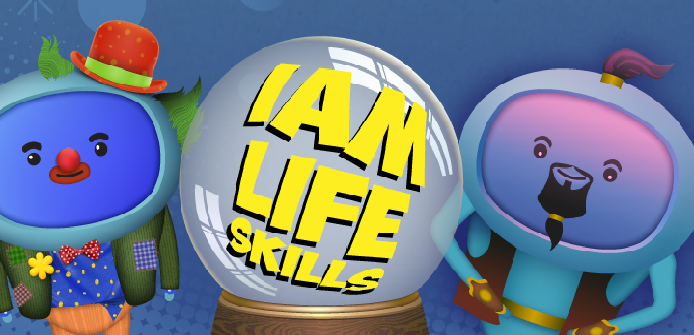Learning at Work Week (L@WW) is a national initiative led by Campaign for Learning, to get the fire going under our workplace learning cultures.
Learning at Work Week (L@WW) is a national initiative led by Campaign for Learning, to get the fire going under our workplace learning cultures.
It’s a week-long sandbox. You can throw some stuff out, see what sticks, iterate and go again. It can exist as a breakaway project, separate from your overarching L&D strategy and an opportunity to be fresh and fancy-free.
Although every year has a theme (this one - Create the Future), I wasn’t keen on shoehorning our approach to make it fit. So, we picked our own, something that felt ‘us’ and spoke to where we are as a largely remote team – in need of opportunities to connect. It would be a series of small experiments focusing on starting up conversations, sharing interests and learning from one another.
We laughed, we… (I don’t think anyone cried but I can’t say for sure). Here are my 7 key takeaways:
1 – Failure is your friend
Some of the ideas I saw as a guaranteed hit, like sharing our most inspiring non-fiction list, only drummed up interest from half the team. Others, like people sharing what they’re currently curious about, spurred lots of lively chat: considered PhD's, outer space, astounding history, mind-body connection, gardening, meet cute stories, and beyond. You couldn’t shut us up. Not everyone is an avid reader but we’re certainly all tremendously passionate about something.
The trick is variety – enough different things going on and paying attention to what’s landing, what’s really not, and why. Taking note. And trying not to inwardly crumble if something doesn’t resonate (after a few years in L&D, my resilience is noticeably robust). You can analyse what happened, learn and move on. Nothing is wasted.
2 – Play where the people are
Where do people already visit, gather and chat? These platforms are your L@WW arena. As tempting as it can be to go off-road, explore somewhere new or dust down your unloved LMS, if you want to hook your core audience, deliver to where they already live. If you understand how they prefer to communicate, like creating videos, joking around, sharing links to Ted Talks, memes, personal anecdotes etc. lean into what already works for them.
We are very, very chatty on Slack, our communication platform of choice, so it made sense to generate interest on there AND make the majority, if not all the activities, Slack-friendly. I also utilised our informal channel (for all things social, silly and non-work) – iAMPlayground.
3 – Be mindful of the flow of work
If you have a super busy, stressed team, throwing in twelve hours of learning over the course of the week, may not go down swimmingly. And there’s a reason this ‘in the flow of work’ suggestion is in the title of soooo many webinars. Learning activities which are relevant, just as long as they need to be, and don’t take the individual away from their day job, are primed for success. For this reason, asking a different and short question mid-morning on each day worked wonders for us:
- Questions were sent the week before = time to think
- Engaging with it at all only took a few minutes
- Continuing the conversation was optional and about genuine interest
- Every day had a different champion to lead the conversation
I also ran a 45-minute interactive session on feedback. There was a massive appetite for it, it applied to everyone, and sometimes a snappy piece of bitesize learning just isn’t going to cut it. I gave people a lot of notice for this and worked with team leads on the best window. I’m going to follow up with lots of related (and short!) resources.
Know the flow, so that when it’s unavoidable, you can also conscientiously break it.
4 – The groundwork is social connection
The foundation of a great culture, learning or more holistically, is great relationships. There is often scepticism around the idea that lots of chat on hobbies, interests and anything BUT work, is good for the business and its people, but these sceptics are really missing the inner workings.
What people are doing (yes, alongside recommending a local plasterer and the best way to re-pot an orchid) is generating relationships which stretch beyond working at the same place. Commonalities, stuff to debate, shared history, really, really odd fascinations (trust me). It’s not magic but it is oil. It eases up conversations, work feels a little less transactional, you develop more empathy and understanding, and are keener to collaborate. It’s nice. People want to help people they like, so fan their curiosity and get things going.
5 – Give different people the wheel
You can’t forget, although sometimes I bet you’d like to, that all-important buy-in. With L@WW, it’s especially important that as many people as possible see the value in what you’re doing and want to take part. Otherwise, you’re left with that tacky, tick-box feel (Valentine's Day anyone?), which is heavily L&D led with little engagement.
There are a few ways to avoid this; you can ask people what they want. Have they seen something work well in a previous company? Is there something they want to learn more on? You can consult the data – are there knowledge gaps, issues coming up time and time again, something everyone is talking? You can build it together – representatives, subject matter experts, allies, pivotal people – sell what’s in it for them.
In an ideal world, you create much more pull than push.
Gain an understanding of multiple ways to collaborate, and resources and experiences to leverage – and all way in advance. If L@WW falls at a cack time for your business, maybe key advocates are away or it will get swallowed in the noise of a deadline – move it, rebrand it, tinker away until it works for you.
6 – Learning isn’t just a May thing
On a similar note, packing everything and anything into one week, zipping it up on a Friday and considering it job done until next year, would be a real shame. Fingers crossed, you’ve tripped over a few things that really landed, and you’ve spotted the fresh green shoots of possibility. Maybe it’s something you could scale – roll out to more people or more frequently. Perhaps you’ve put a lone brick down and realised you could make a mighty impressive wall. It’s worth looking at what made the thing that worked, work – and seeing how you can harness the power of it in the future.
We’ve decided to buy all the books people recommended during the week. We’re going to graffiti them (probably not the cover) with the reasons they’re so loved, and they’ll be the start of our humble office Lending Library. People can then sign them out at leisure, and we’ll add to the collection over time. This could backfire, and I’ll end up a grumpy librarian, sighing loudly over cracked spines and missing pages, but I do quite like the idea of fining my colleagues and pocketing the dosh. Watch this space.
7 – Don’t forget to push yourself
There’s nothing quite like the power of leading by example, and this is a great week to do it. What are you personally going to learn? Rather than sitting on the sidelines, jump in, get involved. It’s one thing telling everyone how important learning is and ushering them forward into new spaces, but if you’re not seen to be doing it too, the message quickly gets diluted.
That’s how my team now know that I’m obsessed with the longest study on happiness (85 years and counting), inhale Diary of a CEO and have a nice chunk of Vinted change (it’s addictive).
It’s also how I ended up facilitating my first team learning session on giving and receiving feedback. Ahh, the sweaty experience of personal growth.
Seriously though, roll your sleeves up and show them how it’s done. It’s an opportunity to put L&D in the spotlight for the right reasons, part of the team, not outside of the team. Then milk it for everything it’s worth in a blog or something.

Gemma Glover
Head of People




